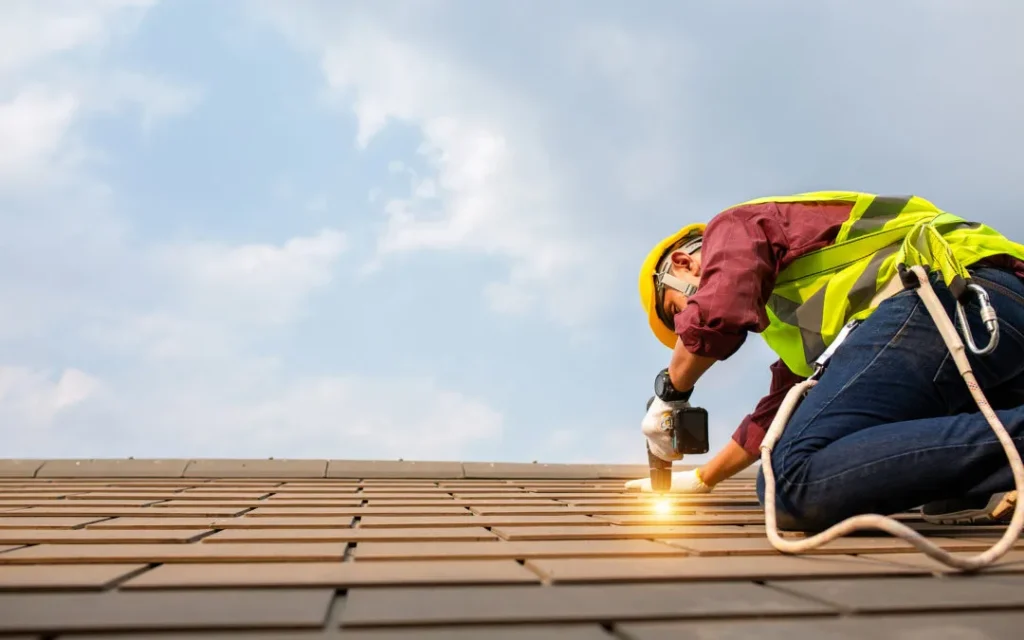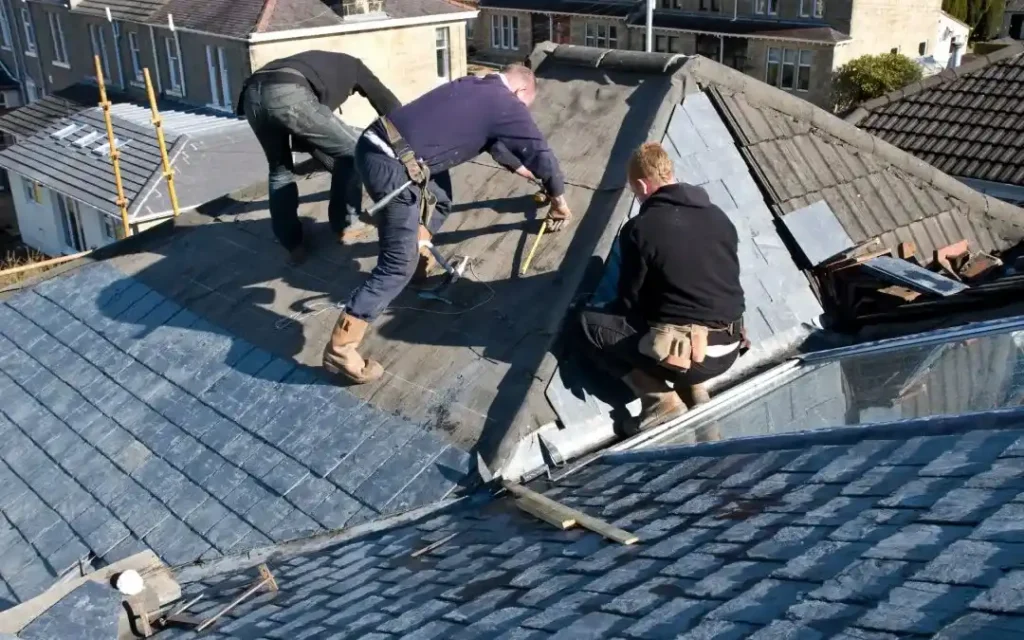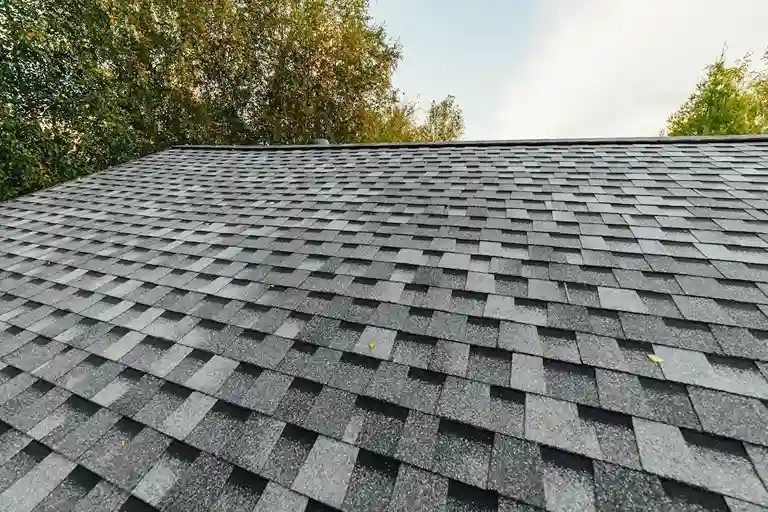How Often Should You Replace Your Roof?
As a homeowner, you must know the importance of a solid roof over your head. However, many homeowners overlook its maintenance, leading to costly repairs or even an untimely replacement. So, how often should you replace your roof? And who can you trust with such a big investment? That’s where Frog Roofing comes in, with 15+ years of experience in the roofing industry, making their marks as top roof replacement contractors in Plano, TX.
Key Factors That Influence Roof Lifespan
The roof serves as the first line of defense for your house, which is greatly influenced by factors such as roofing materials, installation quality, climate, and regular maintenance. The expertise Frog Roofing have gathered over the years examines the factors that influence the roof’s longevity. For expert help maintaining your roof’s lifespan, check out Frog Roofing’s Roof Maintenance Service in Plano to protect your home year-round.

Roofing Materials: The Backbone of Roof Longevity
One of the most influential factors determining the roof’s lifespan is roofing materials, which serve as a foundation for roofing. Frog Roofing’s experienced team completely understands the roofing system and various types of roofing material based on their lifespan, weather resistance and maintenance.
Asphalt Shingles: A Popular but Shorter Lifespan Choice
- Affordable and easy to install
- Last from 15 to 30 years.
- Asphalt shingles’ lifespan depends on the roof shingles’ quality and the climate.
- To the point that, in extreme weather conditions, they cracked very quickly.
Metal Roofing: Durability That Lasts for Decades
- Metal roofs, like steel, aluminium, or copper, can last 40 to 70 years.
- High-end level of the residential models along with warranty.
- Metal roofs are not only invincible to extreme climates but also advantageous for buildings in areas where hurricanes and fires are constant threats.
Clay and Concrete Tiles: Built to Endure the Test of Time
- Clay and concrete tiles are well known for their durability and longevity.
- Tiles last 50 years but extend up to 100 years if properly maintained.
- Due to their heavy weight, they might also need more structural support.
Slate Roofs: The Longest-Lasting Material
- Most sustainable and diversifying material.
- Long-standing types of roofing materials with a life expectancy of more than 100 years
- It is highly expensive and needs to be installed by a professional.
Wood Shingles and Shakes: Beautiful but High-maintenance
- The durability of wood shingles is up to 30 years.
- Require preventive measures and follow a maintenance plan
- Challenges that most homeowners usually face in wood shingles are troubles due to the high humidity level
Installation Quality: Ensuring a Strong Foundation
Although it may sound straightforward, roofing installation mistakes are the main reason for the breakdown of many high-quality roofing materials. Here comes Frog Roofing, which employs experienced and reputable roofers to ensure the roof is built to last.
Proper Ventilation
A roofing ventilation system must function properly to keep the roof safe for many years. Insufficient ventilation can lead to attic spaces heating up, and high humidity in the attics can allow sprouts to sprout into fungi. A special attic ventilator keeps your roof and your entire house in a steady state; therefore, it is not easily spoiled.
Flashing Done Right
Due to inadequate flashing, the water finds its way to hidden locations that are more likely to experience leakage and destruction. Another thing is ensuring the filling of the edges and seals, crucial in preventing water from seeping in.
The Right Roofing Underlayment
Basically, underlayment is a physical barrier that protects the roof. The underlayment is a sheet put under the visible shingle/slate material. Right roofing underlayment can be a critical factor in preventing leakages, such as those caused by bad weather conditions..

Plano's Weather: How It Impacts Roof Lifespan?
Weather conditions in Plano, Texas, are often challenging and sometimes unique. Tricks and climate changes significantly affect the roofing materials’ lifespan and durability. Thus, it is necessary to understand the implications of these climatic factors on roof lifespan. Frog Roofing Being experts aware of these factors has given you perfect solutions to elongate your roof’s life in Plano’s weather. Trust Frog Roofing for Timely Roof Replacement in Plano.
Plano’s Heat Impacts on Roof Lifespan
According to the National Weather Service Climate Data, Plano’s long and extremely hot summers can quickly damage the roof. Also, these are summers when temperatures usually reach over 100°F. Constantly exposed to ultraviolet rays will dry out the cement sealing part of the asphalt shingles.Increased energy cost: the temperature of the roofs will be so high, thus increasing the energy cost put in by the cooling system, and operational costs can be greatly increased.
Prevention Tips:
- Cooling technology is used in roofing materials for heat-resistant roofs.
- Materials like TPO, EPDM, ABS, and PVC will retain less solar heat.
Hailstorms and Roof Damage
Hail is Plano’s primary problem. Depending on its size and speed, it can cause lots of damage. Hailstorms cause cracked shingles, allowing the rain to enter the roof and cause the deck to rot. Repairing hail-damaged roofs is too expensive. For expert guidance on managing hailstorm damage, check out Frog Roofing’s blog, Hail Damage to Replace a Roof, to address these challenges.
Prevention Tips:
- Ensure the use of hail-resistant roofing materials that are lighter than asphalt.
- Our green roof coatings save you money, and one of the biggest benefits is that they are eco-friendly.
- Schedule regular inspections after hailstorms to address damage.
Effects of Plano’s Occasional Freezing
Even though Plano rarely has very cold winters, the place occasionally experiences freezing temperatures and ice storms. Roof ventilation and insulation are imperative to prevent ice dams. Therefore, the ice dam will not appear when the roof is ventilated properly, ultimately increasing the roof’s lifespan.
Prevention Tips:
- Ice dams are prevented using roof insulation.
- Wood, copper, and zinc are used in the roofing materials, which won’t freeze quickly.
Visible Signs Your Roof Needs Replacement
Some signs of roof damage are hard to miss, so it is necessary to take immediate action as soon as possible in the case of any of the signs mentioned below.
Leaks and Water Damage
Brown spots on the ceiling or walls, slowly dripping water, or existing water are signs of roof damage. If these faults are left unsolved, they could lead to severe roofing problems and create conditions favorable to could growth.
Missing or Damaged Shingles
When shingles are missing, cracked, curled, or blistered, the absence of shingles leaves the underlayment bare and more susceptible to leaks. Regularly inspecting shingles and their slight maintenance is important to stabilize the roof structure.
Sagging Rooflines
Sagging roof lines are signs of severe damage to the roof structure, usually due to water exposure over a long time or a roof deck breaking down. A thorough professional examination would be suggested to know the problem’s actual condition and the right action step.
Key Benefits of Regular Roof Maintenance
The long life of a roof can only be guaranteed through regular roof maintenance, especially if the roof is located in an area with extreme weather conditions like Plano, Texas.
Early Detection of Issues
Frequent check-ups for easy diagnosis of basic issues like leaks, damaged shingles, and loose flashing at its onset instead of waiting for a quick fix.
Prevention of Expensive Repairs
Repairing minor issues immediately prevents structural damage that can lead to expensive repairs or the new roof to be repaired instead.
Improved Energy Efficiency
Regular roof maintenance manifests the proper performance of the insulation and ventilation system, quality construction, and reduced energy consumption in the house.
Increased Roof Durability
Repairing on time helps your roof withstand the elements longer, reducing the need for premature replacement.
Annual Roof Maintenance Schedule for Plano
Spring (March to May)
- Check for signs of hail damage.
- Clean the gutters to eliminate any debris
- Clear roofing of branches, limbs, leaves, or other debris
Summer (June to August)
- Check whether the shingles are damaged by the sun
- Look at the attic: are there any signs of humidity present?
- Inspect the sealant around the roof to see any cuts or cracks.
Fall (September to November)
- Clean and inspect gutters
- Check for wind damage
- Inspect roof valleys
Winter (December to February)
- Look for ice dams
- Inspect for leaks
- Check roof structure issues during winter
DIY Tips for Assessing Your Roof's Condition
Performing a DIY roof inspection is an excellent way to exclude minor issues and maintain the overall integrity of your home. Regular roof checks can help spot minor problems before they turn into expensive repairs. For an in-depth guide on fixing leaks, read Frog Roofing’s DIY Roof Leak Repair Blog and protect your investment.
Prepare for the Inspection
Safety First: Always prioritize safety when inspecting your roof. Use a stable ladder on level ground and wear non-slip footwear.
Inspect When Weather is Clear: The best day for a check-up would be when there are no winds, no clouds and no rain to bother.
Tools You’ll Need
- Stable stepping ladder
- Binoculars to look into places that are otherwise difficult to access
- Protective Gloves
- Flashlight (to look in the attic)
- Camera or a notebook to document your results
Checklist for Roof Inspection
- Inspect Roof Shingles
Look for missing and damaged shingles
Check for shingles granule loss
- Examine Flashing and Roof Vents
The inspection should be concentrated on the area where flashing is present and the roof penetrates. Carefully remove the debris and close the hole so it does not happen again next time.
- Inspect Gutters and Downspouts
The most important step in the roof maintenance checklist is regularly cleaning the gutters and looking for wear and tear signs, such as sagging.
- Check for Structural Damage
Examine the decking from the inside areas of the attic space to locate trouble spots.
- Look for Signs of Leaks
Verify from the attic if there are any signs of a leak. Inspect the floor and walls for the growth of moulds and mildew.
- Examine Roof Ridge and Edges
Check for any missing or damaged ridge leaving your home vulnerable to water leaks.
Why Choose Frog Roofing For Roof Replacement?
When protecting your home, you deserve a roofing company that prioritises quality, integrity, and customer satisfaction. At Frog Roofing, we are committed to delivering high-quality roofing services to meet your needs. Here’s why homeowners consistently choose us:
Experience and Expertise
Frog Roofing has been in the business for more than 15 years and effectively handles roof replacement operations for commercial and residential roofing.
Locally Owned and Operated
As a proud part of the Plano, Texas community, we completely understand the unique challenges of the local climate. From hailstorms to intense heat, we tailor our roofing solutions to withstand Plano’s extreme weather conditions.
24/7 Availability
Emergencies might arise at any time of the day or night. Thus, we’re available round the clock for effective roof repair services.
Licensed and Insured Company
Safety and transparency are our top priorities. We are licensed and insured to give you peace of mind and trust. Our team follows every legal procedure, rule, and regulation to maintain a secure working environment.
Use of Premium Quality material
Frog Roofing ensures the use of premium materials to repair your roof well and meet the highest possible standards.
Customer Satisfaction Guaranteed
Our highest priority is to give our clients peace of mind via our fast and affordable roofing services. We are eager to back all our repair work by offering warranties for your additional peace of mind.
Don’t wait for visible damage to turn into costly repairs. Trust Frog Roofing, the top roof replacement contractors in Plano, TX, to provide expert solutions tailored to your needs.
FAQs
How Much Does Roof Replacement Cost?
Depending on size and materials, roof replacement costs vary between $5,000 and $15,000. Contact Frog Roofing for a personalised estimate.
What Is the Best Season for Roof Replacement?
Spring and fall seasons, March to May, are ideal for roof replacement due to mild weather, but Frog Roofing is equipped to work year-round.
How Long Does Roof Replacement Take?
Most roof replacements take 1 to 3 days, depending on size and complexity, with Frog Roofing ensuring efficient, high-quality service.
How Do I Know If My Roof Needs Replacement?
Signs like frequent leaks, missing shingles, sagging, or age over 20 years indicate it’s time for a replacement.
What Roofing Materials Last the Longest?
Metal roofs and slate tiles can last 40 years and have more durability and longevity.
Will Insurance Cover My Roof Replacement?
Insurance may cover roof replacement if storms or other covered events cause the damage. Frog Roofing can assist with claim processes.

